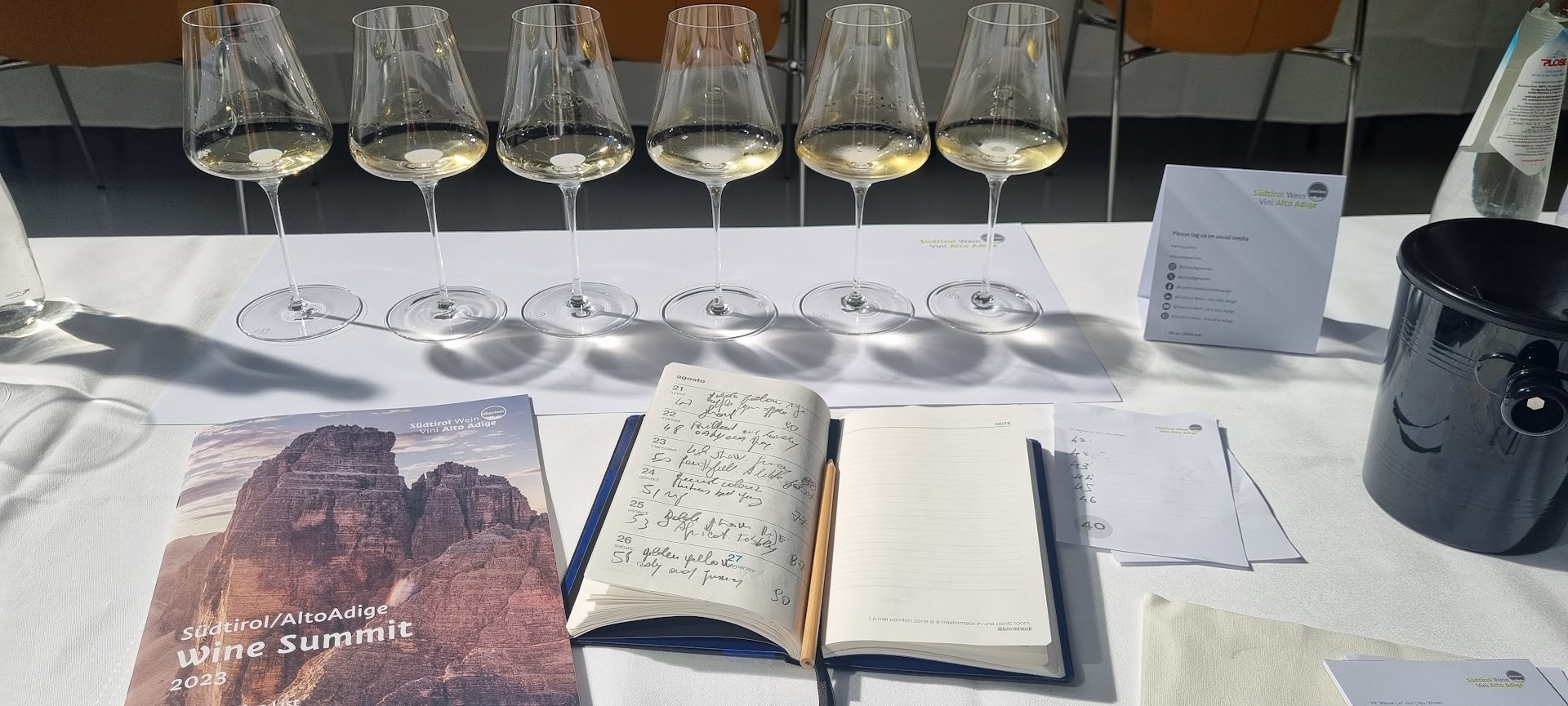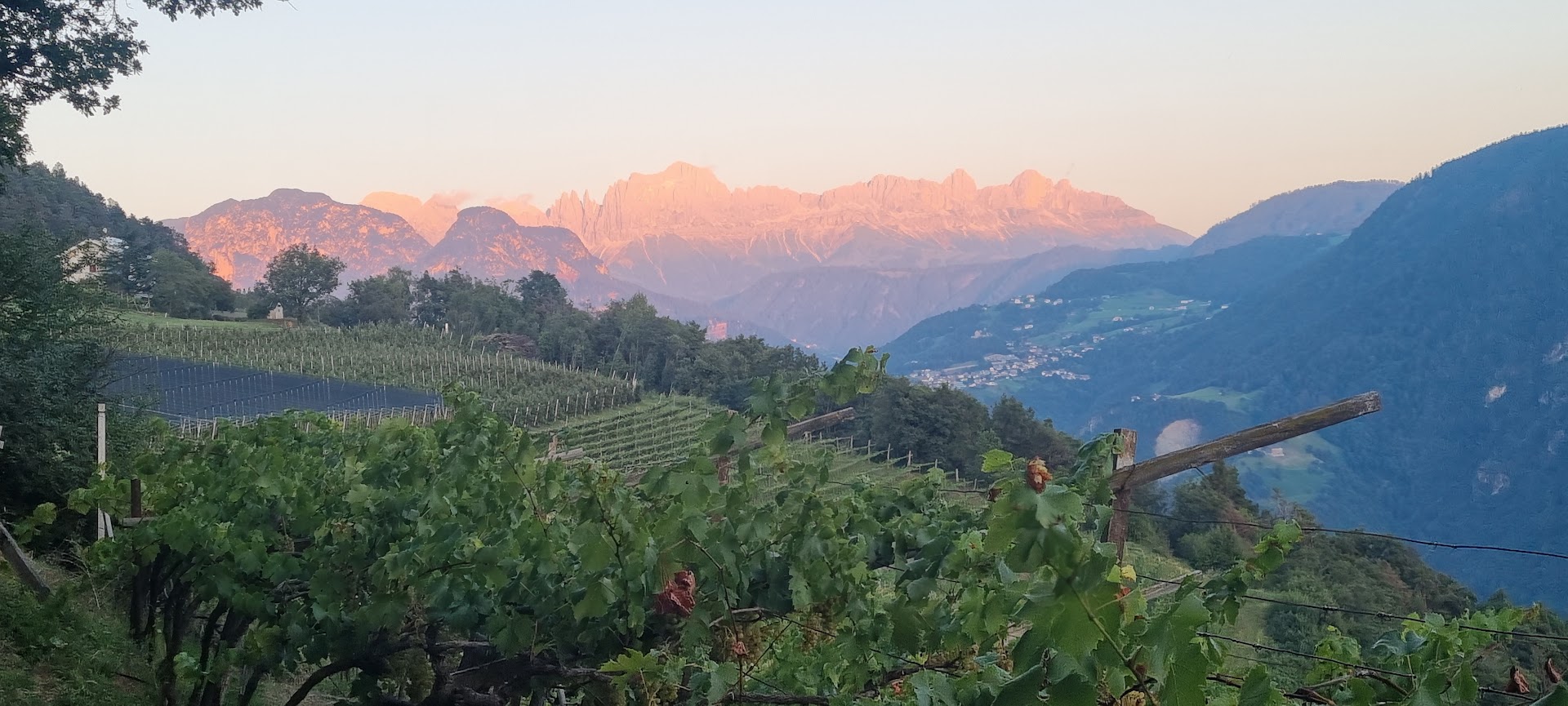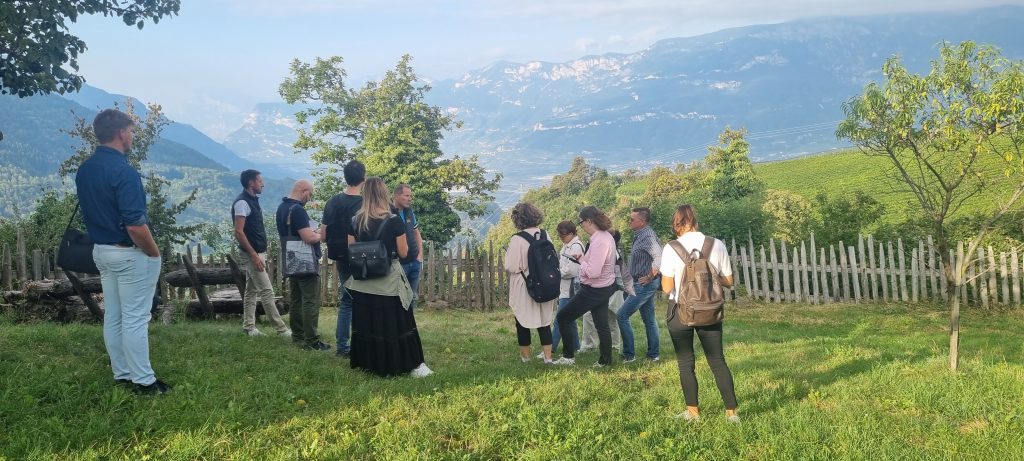Filippo Magnani revels in the region that’s an Alpine paradise for wine lovers and outdoor enthusiasts alike.
This September, I participated in the fourth edition of the Alto Adige Wine Summit. This rather new event is the largest of its kind that focuses on Alto Adige wines and has already drawn significant international attention. Organized by the Alto Adige Wine Consortium, the event hosted 97 producers, 80 wine and media professionals, including Masters of Wine from 12 different countries. The goal was to highlight to the world the complex nature and contrasting qualities that define Alto Adige’s authenticity.
Situated in the picturesque region of South Tyrol in northern Italy, Alto Adige DOC is the country’s smallest wine region and arguably its most complex. Over 98% of the region has the DOC certification. One of the Alto Adige Wine Consortium’s objectives has been to create a more detailed zonation and soil mapping to reflect its complexity. The region is already divided into seven distinct growing sub-regions, each linked to grape varieties. Add to that breathtaking alpine scenery, a rich cultural heritage with diverse grape varieties, and it’s no surprise the region has gained a reputation for being a must-visit destination among wine enthusiasts.
A winemaking crossroads of culture
Alto Adige, also known as Südtirol, has a fascinating history that has shaped its winemaking traditions. Nestled between the towering peaks of the Dolomites and the Adige River, this region has been influenced by both Italian and Germanic cultures, resulting in a fusion of traditions and winemaking techniques. The artisan skill, precision, and reliability from the north has married the charm, art of living and wine tradition from the south.
The region’s winemaking history dates back to ancient times with 2,500 years of winemaking tradition, making it the oldest wine region in the German-speaking world. It was the Romans who first recognized the unique potential of Alto Adige’s vineyards. They introduced vines to the region, and over the centuries, grape cultivation flourished.
Climate and terroir
Alto Adige’s unique climate and terroir play a significant role in shaping the character of its wines. The region benefits from a mix of Mediterranean and Alpine influences, creating a cooler climate which helps retain the grapes’ natural acidity. Vineyards are situated on steep slopes, at varying elevations (200m-1,000+m) that provide excellent sun exposure. The tall mountains in the north shield vineyards from the coldest northerly winds, but the combination of warm days and cool nights allows the grapes to ripen slowly, resulting in wines with vibrant fruit flavors and good acidity.
The diversity of the region’s soils also contributes to the complexity of its wines. From the limestone-rich soils in the south to the porphyry and schist in the north, Alto Adige offers a wide range of terroirs that influence the flavors and aromas of its wines. All geological formations are found here (volcanism, sedimentation, orogeny) and there are in fact 150 different types of rock. The composition of the soil can change drastically within a few meters. Such a rich land requires meticulous attention to detail.

A medley of grape varieties
With such a complex terroir it’s no surprise that Alto Adige is known for its rich variety of grape varieties that thrive throughout the region. Here, tradition meets innovation and change has been embraced by producers. The region used to be a land of reds with main native varieties Schiava and Lagrein, but now the production is 64% white wines, using grapes such as Pinot Grigio, Pinot Blanc, Sauvignon Blanc, Gewürztraminer, Chardonnay, Riesling, Sylvaner, Veltliner, Müller Thurgau, and Kerner.
Gewürztraminer has historically been a popular grape grown here, known for its aromatic intensity and floral notes. However, many producers have now started to focus on producing high-end Pinot Grigio and Chardonnay that express more complexity and structure. The region’s cooler climate and higher elevation lend a refreshing acidity, resulting in wines that are crisp, elegant, and mineral-driven.
Among the red grape varieties, Lagrein has long been one of Alto Adige’s indigenous specialties. Lagrein wines are full-bodied, yet smooth and velvety, with flavors of dark berries, chocolate, and spices. This variety produces wines that can age gracefully and develop complex aromas over time.
Schiava, another red grape variety, is widely grown in Alto Adige and is known for producing light and fruity red wines with delicate aromas of red berries and floral notes. These wines are easy to drink and excellent when slightly chilled, making them perfect for enjoying on a warm summer day.
Pinot Noir also thrives in Alto Adige and is one of the region’s best kept secrets. Many critics argue that these are the best Pinot Noir’s south of the Alps. Pinot Noir in Alto Adige is full of elegance and can exhibit intense fruit aromas, spice, flowers and earthy undertones.
A strong winemaking community
Over the years, the region has developed a strong sense of community among winemakers. A total of 5,000 producers with only 5,600 hectares of vineyards have created a region comprised mostly of smaller family-run estates with longstanding traditions. However, many are too small to make and market wine themselves, which is why a cooperative system formed, and it’s now around 150 years old. It’s one of the pillars of the Alto Adige winemaking business.
Even if the ‘cantine sociali’ used to be linked to massive production, it’s important to underline that these big entities, in the last few decades, have aimed for excellence, trying to create the best expression of their land and generally reaching impressive results.

A traveler’s paradise
Alto Adige offers a delightful experience for wine enthusiasts and travelers alike. Its beautiful landscape, charming villages, and world-class wineries make it an ideal destination for wine tourism.
Many wineries in the region welcome visitors, offering guided tours of their vineyards and cellars with an opportunity to sample a variety of exceptional wines, from aromatic whites to elegant reds and sparkling wines. Accompanied by local delicacies and paired with breathtaking scenery, the wine tourism experience in Alto Adige is truly memorable.
In addition to wine, if you’re an outdoor enthusiast or a culture lover, there’s plenty for you to enjoy in this picturesque alpine wonderland. These breathtaking mountains, pristine lakes, and verdant valleys make hiking and mountain biking a popular activity, thanks to its extensive network of trails. From leisurely strolls through picturesque villages to challenging ascents up rugged mountains, there are trails to suit every level of fitness and experience.
The Dolomites are a UNESCO World Heritage site that rises up to more than 3,000 meters, with forests, lakes and gentle green valleys that offer a unique play of light and shadow, which is difficult to describe without experiencing it. They provide a stunning backdrop for rock climbing and via ferrata (iron path) adventures. With their towering peaks and dramatic cliffs, climbers can enjoy breathtaking views and exhilarating challenges.
Water sports enthusiasts will find plenty of opportunities to indulge in their favorite activities. Lake Caldaro, the largest lake in the region, offers swimming, sailing, and windsurfing. The nearby Passo Resia and Lake Soasere are perfect for windsurfing and kitesurfing.
During the winter months, Alto Adige becomes a winter playland for snow lovers. The region boasts numerous ski resorts, including Val Gardena, Alta Badia, and Plan de Corones, offering a wide range of slopes for skiers and snowboarders of all levels.
Cross-country skiing and snowshoeing are also popular activities, allowing visitors to explore the snow-covered landscapes at a more relaxed pace. The region’s winter hiking trails provide breathtaking views and a chance to experience the tranquility of nature.
Alto Adige is also renowned for its culinary delights, combining Italian and Austrian influences to create a unique gastronomic experience. One must-try dish is the South Tyrolean dumplings, known as knödel in German. These flavorful dumplings come in various flavors and are often served as a side dish or as the main course accompanied by sauces and local ingredients. Pair them with a glass of Schiava, Pinot Blanc or Pinot Grigio for a truly indulgent experience.
Alto Adige is also rich in history and culture, with influences from both Italian and Austrian traditions. Exploring the region’s towns and villages is like stepping back in time. Bolzano, the region’s capital, is a vibrant city with a mix of Italian and Austrian architecture. Strolling through the charming streets, visitors can explore historic sites like the South Tyrol Museum of Archaeology, home to the famous Ötzi the Iceman. The city’s Christmas market, one of the most renowned in Italy, is also a must-visit during the holiday season.
Merano, a spa town famous for its thermal baths, offers a blend of art nouveau and medieval architecture. The Kurhaus, with its beautiful gardens and stunning architecture, is a testament to the town’s elegance and grandeur.
Alto Adige is also home to numerous castles and fortresses, which are a testament to the region’s rich history. Castle Tyrol, Castel Roncolo, and Sigmundskron Castle are just a few examples that provide a glimpse into the region’s medieval past.
Wellness and relaxation
The area is also renowned for its wellness and spa offerings, providing the perfect retreat for relaxation and rejuvenation. The region boasts a wide range of thermal baths and wellness centers where visitors can unwind and enjoy a variety of treatments. The Terme Merano, with its stunning architecture and luxurious facilities, offers a range of spa treatments and thermal baths. The unique combination of natural beauty and wellness expertise makes it a popular destination for those seeking tranquility and well-being.
From the awe-inspiring landscapes to the diverse leisure activities and cultural experiences, Alto Adige offers a truly immersive and unforgettable vacation. Whether you’re seeking world-class wines, gastronomic delights, outdoor adventures or cultural exploration, this alpine paradise has something for everyone.
So, pack your bags and embark on a journey to Alto Adige, where you can immerse yourself in nature, savor exquisite flavors, and discover the rich history and cultural heritage of this enchanting region. Your leisurely escape awaits in this alpine wonderland.

